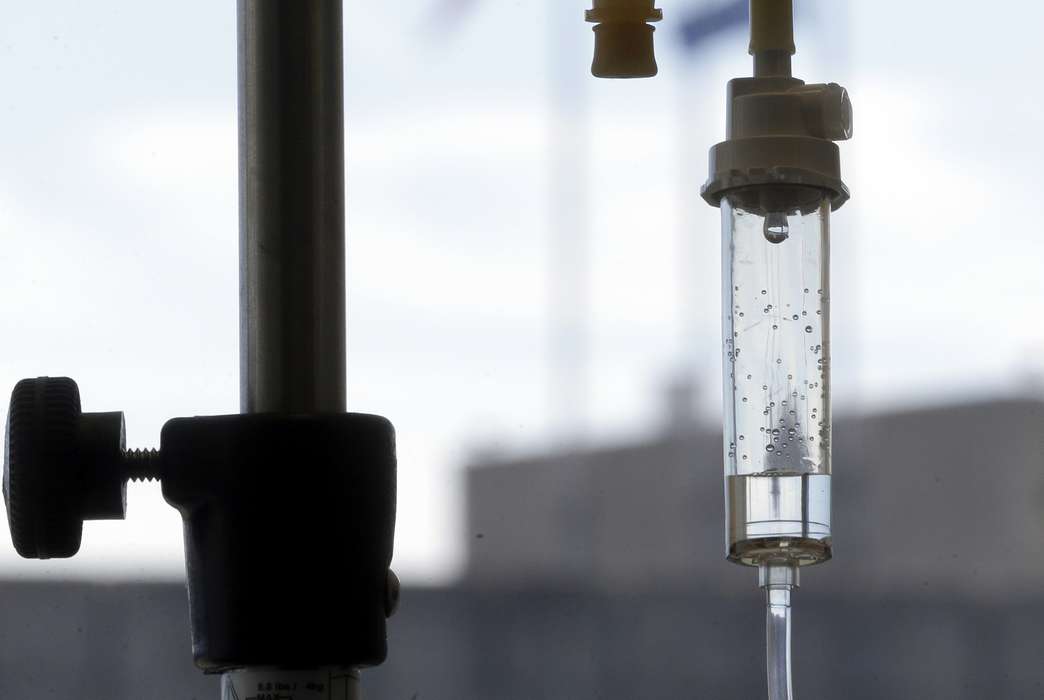On-site workers with COVID-19 protections less anxious, depressed than remote staff
Indian municipal workers in personal protective equipment (PPE) guide passengers arriving from United Kingdom, at Chhatrapati Shivaji Maharaj International Airport in Mumbai, India, Tuesday, Dec. 22, 2020. (AP Photo/Rafiq Maqbool)
Essential non-health care workers in workplaces with robust COVID-19 infection control programs report fewer symptoms of anxiety and depression than those who are working from home, new research found.
In a study published in the Annals of Work Exposures and Health journal on Dec. 14, a team of researchers examined connections between the mental health of Canadian adults during the period from April to June 2020 and how their employers handled coronavirus infection control in the workplace.
Since the global spread of the coronavirus last spring, every industry has grappled with navigating new workplace safety protocols. But the COVID-19 pandemic has been unlike other traditional workplace hazards because everyone can be exposed to the virus. When an individual is exposed to a workplace hazard and has no ability to control it, that usually leads to increases in work injury and stress, the researchers said.
“This is a very new area for a lot of non-health organizations that continue to operate” during the pandemic, Peter Smith, a senior scientist at the Institute for Work and Health and lead author of the study, told The Academic Times. “It’s important to try and understand how well these workplaces have adapted to infection control procedures.”
Smith recruited a sample of about 3,800 people who were employed full-time or part-time as of March 2020 in industries including education, manufacturing, social services and retail food service. The participants were either working remotely, working on-site or had lost their jobs since the pandemic was declared in March.
On-site workers were asked questions about the adequacy and implementation of 11 different types of infection control programs, referred to as ICP, at their workplaces, including increased ventilation, the installation of physical barriers such as Plexiglas, physical distancing from coworkers, laundry for work clothes, staggered schedules, regular cleaning, sanitizing food preparation surfaces and waste disposal practices.
These workers were also asked about the adequacy and supply of eight different types of personal protective equipment, or PPE ― gloves, eye protection, face shields, gowns or coveralls, handwashing and sanitizing materials, surgical masks, N95 masks and respirators.
Smith found that just over 20% of on-site workers said that all their infection control procedure needs were being met, and almost 40% of on-site workers said that all their PPE needs were being met.
But 30% of site-based workers reported that less than half of their infection control procedure needs were being met, and about 20% reported that less than half of their PPE needs were being met.
Smith measured anxiety symptoms and depressive symptoms among the participants using the Generalized Anxiety Disorder (GAD-2) screener and the Patient Health Questionnaire (PHQ-2) screener, respectively.
Among all remote workers, 35.4% showed symptoms of anxiety and 27.5% showed symptoms of depression. Of all site-based workers, 43.5% showed anxiety symptoms and 34.7% showed depressive symptoms. And of those workers who had lost their jobs, 44.1% showed anxiety symptoms and 35.9% showed depressive symptoms.
However, on-site workers who had all of their ICP needs met were the category with the lowest levels of anxiety and depressive symptoms. Among these workers, 29% showed anxiety symptoms and 23% showed depressive symptoms.
“The people who are at the worksite who feel fully protected have the best mental health outcomes. Their levels of anxiety are lower than workers who are working at home,” Smith said.
The researchers determined that adequate infection control programs at the workplace is the most important factor contributing to employees’ mental health during the pandemic, and that adequate PPE is also important, though to a slightly lesser extent.
Though the sample only included workers from Canada, the researchers believe that the relationship between feeling unsafe at work and increased symptoms of anxiety and depression is consistent across other countries.
“In our study, we’re showing that there are factors in the workplace, which are all modifiable, which actually lead to really large differences in terms of anxiety symptoms,” Smith said.
He noted that implementing procedures for physical distancing and the installation of physical barriers should be prioritized because they make a significant difference to the mental health of most on-site workers.
“If we can focus on factors which might help reduce levels of anxiety, especially for those people that are still going to the worksite, I think it’s important to do so,” Smith said.
Smith is currently conducting a follow-up study using the same surveys with a new cross-sectional sample of non-health care workers. It will investigate how anxiety and depression levels have changed as the pandemic has progressed, and how workplaces have adapted to safety measures since June.
The study, “Labour Market Attachment, Workplace Infection Control Procedures and Mental Health: A Cross-Sectional Survey of Canadian Non-healthcare Workers during the COVID-19 Pandemic,” was published in Annals of Work Exposures and Health on Dec. 14. Peter Smith of the Institute for Work and Health and of the University of Toronto was the lead author. John Oudyk of McMaster University, Guy Potter of Duke University and Cameron Mustard of the Institute for Work and Health served as co-authors.
This story has been updated with additional information about the study authors and their affiliations.










